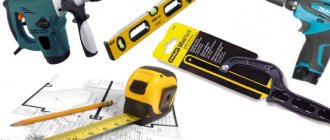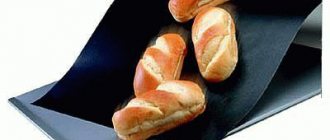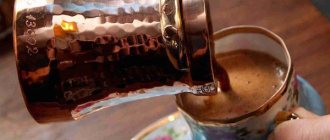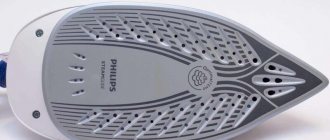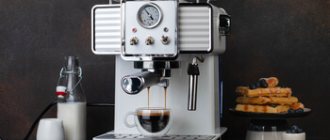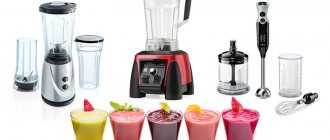The most modern and convenient development for the oven is the pyrolytic cleaning system. This function involves self-cleaning the oven from dirt. This function is present in electric oven models.
The cleaning system is produced by high heating temperature. This means that the oven capsule contains a heater made of durable metal, which heats the entire oven compartment over 460°. As a result, all food residues burn out and turn into ash. As a result, it is enough to remove the remaining debris from the oven box.
During burnout, an unpleasant burning smell is created in the oven, but due to the installed filtration system, it does not penetrate outside. The filter does not need to be cleaned or replaced; its shelf life is designed for the entire period of operation of this equipment.
Brief characteristics of the pyrolytic oven system
An oven with pyrolysis is an advantage of more expensive electric ovens. They are made from crucible steel. The stove door has three-layer, in some cases four-layer, heat-insulating glass.
A brief description of:
- the pyrolysis function in ovens provides ideal self-cleaning ability; in the end, you won’t have to scrub or wash anything;
- the oven cleaning process is performed by a separate independent program;
- During cleaning, the electric oven door is automatically locked and unlocked when the process is completed;
- The electric stove is cleaned within 90-150 minutes.
Pyrolytic cleaning of ovens
The oven needs to be cleaned from time to time, removing burnt splashes of fat from the walls. It is difficult to wipe off carbon deposits, and besides, traces of chemical detergents remain on the walls of the oven, which then get into the food. Fortunately, today you can buy an oven with a self-cleaning function. Oven models with a pyrolytic cleaning system are an excellent choice for those who want to delight their home with delicious dishes without manually cleaning the internal surfaces of the oven.
You can choose a pyrolytic oven of various designs and volumes. Some of the best-selling ovens with a self-cleaning pyrolysis function are ovens from the Kaiser and Korting brands. For example, oven models with pyrolytic cleaning Kaiser EH 6426 AD and Korting OKB 892 PEN each have 11 cooking modes.
Built-in electric oven Kaiser EH 6426 AD
Built-in electric oven Korting OKB 892 PEN
We have already talked about ovens with a catalytic type of cleaning and about hydrolysis ones. Our online store offers a wide range of ovens with a pyrolysis function, let's take a closer look at what makes them good.
How to use the pyrolysis function in an oven?
To properly use the pyrolytic cleaning function in the oven, you must:
- Before cleaning, be sure to remove all metal partitions from the oven.
- Turn on the oven self-cleaning button.
- After completing the process, it is necessary to treat all the walls of the oven from the inside.
Important! To remove dust and burnt residues, use a damp cloth. It is recommended to carry out this operation every 100 hours of oven operation.
Why do you need to clean your oven?
After cooking, plaque, streaks and layers of fat and small food particles remain on the inner walls of the oven. If they are not cleaned immediately, the fat layer will polymerize. After some time, the deposits turn into a rubber-like film, which does not dissolve with conventional detergents and can only be cleaned mechanically.
When the oven operates at high temperatures, these layers begin to burn. This causes the food to acquire an unpleasant odor, and the appearance of the oven becomes unattractive and sloppy. The problem intensifies when, after meat or fish dishes, they begin to prepare baked goods, which become saturated with foreign odors and lose their quality.
Most users don't go deep into cleaning methods, using conventional washing techniques using a damp cloth and standard detergents. However, their effectiveness in this case is extremely low. Layers of fat, particles of burnt food and other elements that have undergone heat treatment do not respond to conventional formulations.
Attempts to remove plaque mechanically often give the opposite result - the coating ends up scratched and damaged. In addition, the situation is aggravated by the time factor - if it is still possible to clean the fat immediately after the oven has cooled, then after a few hours this procedure will be much more difficult.
Expert opinion Galina Valerievna Borodina
Every housewife is jealous of the appearance and condition of kitchen equipment, so the problem of removing deposits becomes common and very relevant.
Positive traits
The pyrolytic purification system has quite a lot of positive qualities. Compared to catalytic and hydrolysis technologies, this is considered more effective.
- No need to use detergents.
- Gets rid of the heaviest contaminants: fat, dairy products, burnt food, etc.
- Cleaning is carried out for the entire interior of the oven. All hard-to-reach areas of the oven chamber are cleaned.
- No additional costs for materials are required: the electric oven has all safety and ventilation systems.
Catalytic method
The side walls of oven models with this type of cleaning are covered with a special enamel that is rough to the touch. The pores provided contain a special composition, which, when fats enter them, decomposes them into water, carbon and organic residues.
Cleaning is carried out during cooking, which eliminates the need to turn on the oven specifically for this process.
The bottom and doors of the oven are not protected and will have to be cleaned by hand. This is done because the protective coating is very susceptible to sugar and dairy products, which destroy the enamel. And when baking sweets, their filling very often leaks to the bottom of the oven.
Decomposition of contaminants occurs at relatively low temperatures:
- if the inside of the oven is not very dirty, then it will be enough to heat it to 140 ° C;
- with strong fatty deposits on the walls of the oven, exposure to higher temperatures may be necessary, but they do not exceed 250 ° C.
After performing catalytic cleaning, you only need to wipe off any remaining dirt with a wet cloth.
The internal surfaces of ovens from different companies do not differ in the quality of cleaning, but some of them may have a grease filter. It is intended for reusable use - sometimes its life can last the entire period of operation of the oven. Once every 100 cleaning uses, it should be washed under running water or in the dishwasher, but all dishes and food debris must be removed from it, otherwise they will clog the filter and it will stop working.
Advantages of catalytic cleaning:
- No major costs for electricity and detergents.
- Cleaning occurs during cooking and does not need to be supervised.
- The catalytic method is used not only on electric, but also on gas ovens.
Disadvantages of the method:
- The enamel on the interior surfaces of the cabinet loses its properties after four or five years, and the panels with it have to be replaced. Knowing this, you need to choose oven models with double-sided panels - if the enamel wears on one side, they can be rearranged.
- The oven bottom and door will have to be cleaned by hand; to make cleaning easier, choose a door with the fewest joints and recesses.
- Severe stains will not go away with one cleaning; to remove them, you will need to repeat the process again.
Negative qualities
The pyrolysis function in the oven has a number of disadvantages. The most important of them is the high cost of the stove. Also, an oven with this option does not save the user from additional cleaning; all residues are removed manually.
Unfortunately, the pyrolysis function is only available in electric ovens. The downside to this is that these electronics consume a lot of electricity. And since the pyrolysis option involves heating the oven to a high temperature, electricity will be consumed at the maximum rate.
All oven interiors are cleaned by hand. Racks and trays must be removed during cleaning. And the last disadvantage: the ventilation system does not always cope with its job. Foreign odors may appear both during the self-cleaning period and after opening the oven.
Evolution of pyrolysis and energy consumption
In the first models with pyrolysis there were 3 modes (intensive, normal, minimal). First, the oven temperature rose to 500 °C. It was maintained for a certain time, which depended on the selected mode:
- 3 hours 15 minutes on intensive;
- 2 hours 15 minutes at minimum;
- 2 hours 45 minutes at normal.
In order to accommodate different types of cooking, the products were equipped with an additional cleaning mode. It is called comfort pyrolysis. This option is suitable for those who bake vegetables and bake baked goods.
Contamination from baking flour and vegetable dishes is unstable. To clean them, the device is heated only to 230 °C. This allows you to reduce energy costs. Whirlpool developers equipped their ovens with the “Sixth Sense” function.
The option saves energy. The principle is based on the operation of sensors installed in the oven. The devices monitor the level of carbon dioxide in the device chamber. When the concentration drops to a minimum, the pyrolysis mode is switched off. The system understands that all the grease on the cabinet walls has burned off.
Oven with catalysis: cooking and cleaning
Catalysis differs from other purification systems in that the process begins and occurs automatically , without human intervention.
Be sure to read:
How to light the oven in a gas stove Hephaestus, Greta, Indesit and others
The side surfaces of the device, the back wall and the top are covered with a special porous, slightly rough enamel with particles of a catalyst that absorbs and breaks down fat into carbon and water.
The process of removing food residues occurs at temperatures from 140 to 220 degrees. Catalysis can be used in both gas and electric ovens.
How to use
Activation of cleaning occurs simultaneously with the start of the cooking process, which helps to significantly reduce energy costs. Splashes of grease immediately turn into ash, which can simply be removed with a rag.
The decomposition of dirt begins already at a temperature of 140 degrees. The maximum efficiency of the process is observed when reaching 220 degrees.
For catalysis to work, you do not need to enable any function on the control panel, since the entire procedure occurs automatically.
Benefits of catalytic cleaning
Catalysis has a number of undeniable advantages over other methods of cleaning the oven:
- Use in electric and gas ovens.
- Low energy costs. Cooking happens at the same time as cleaning.
- Long service life of the devices – at least 5 years.
- Affordable pricing policy. The cost of the oven does not depend in any way on the presence of catalysis in it.
- Easy replacement of panels at any service center.
Disadvantages of catalytic purification
Despite all the advantages, catalysis has its disadvantages:
- The need to replace panels after 300 hours of operation due to the loss of their cleaning properties.
- The cost of the oven depends on the quality of the materials used.
- Lack of enamel on the doors and bottom of the appliance.
- If there is heavy contamination, a repeat cleaning procedure is required.
- The panel may not function properly if sugar or milk comes in contact with it.
What is better pyrolysis or catalysis
Often, when choosing such a technique, the question arises: “which cleaning is better, catalytic or pyrolytic.” Everyone chooses for themselves, but:
pyrolytic technology is more expensive, but nothing needs to be changed in it, as in catalytic technology;- in both cases there is no need to buy household chemicals;
- catalysis does not require additional energy consumption, since everything happens simultaneously with the cooking process;
- it does not require strong ventilation in the kitchen, unlike pyrolysis, in which this is a must;
- Cleaning after pyrolysis is better than after catalysis; according to reviews, with the latter, you will need to rub in some places to make the surface perfectly clean.
Of course, everyone decides for themselves what is best for them. But many are inclined to believe that if your oven will work frequently and intensively, then it is better to take expensive pyrolysis, which will pay for itself in the shortest possible time. And even the energy consumption will not be as noticeable as the fatigue from constantly cleaning the oven.

